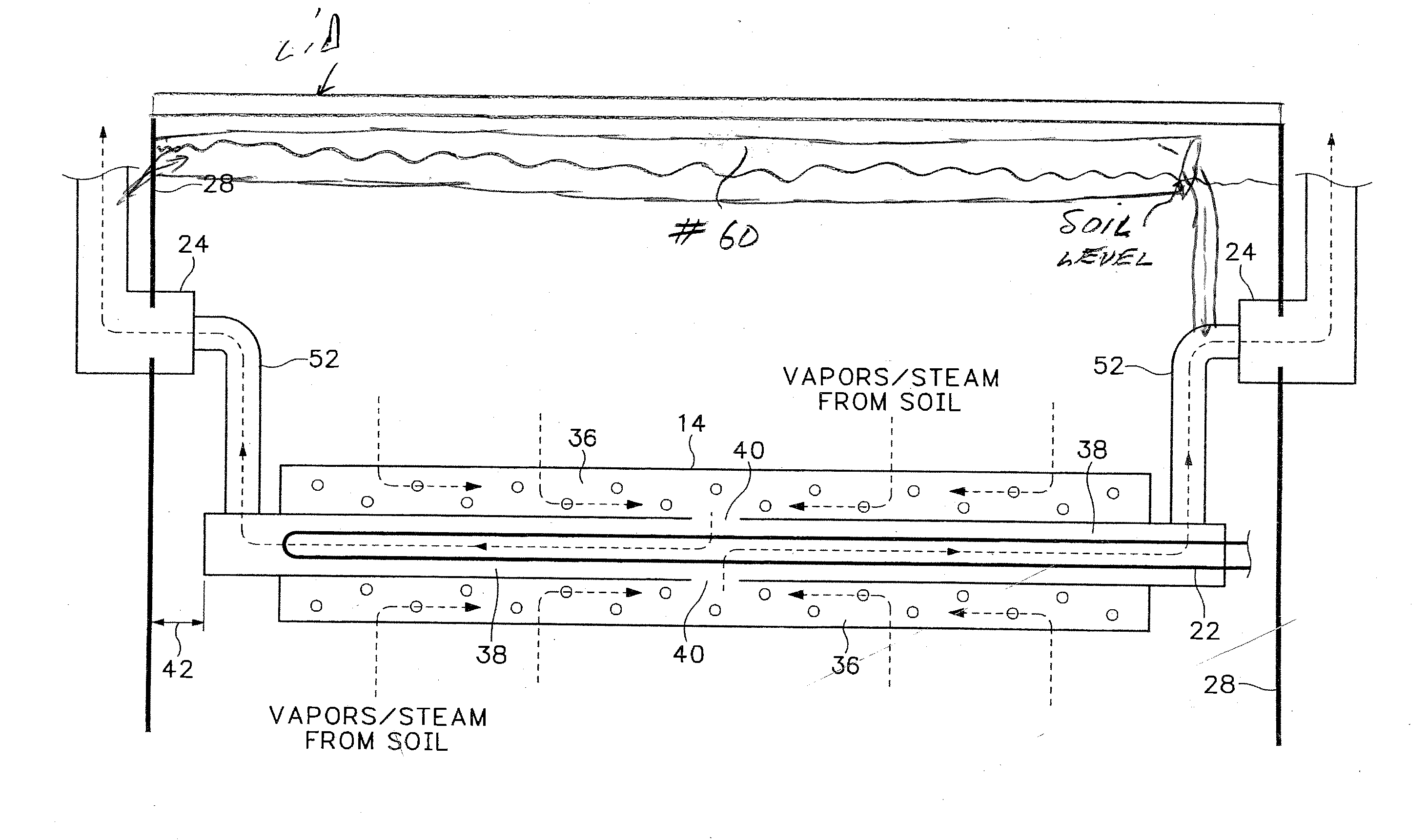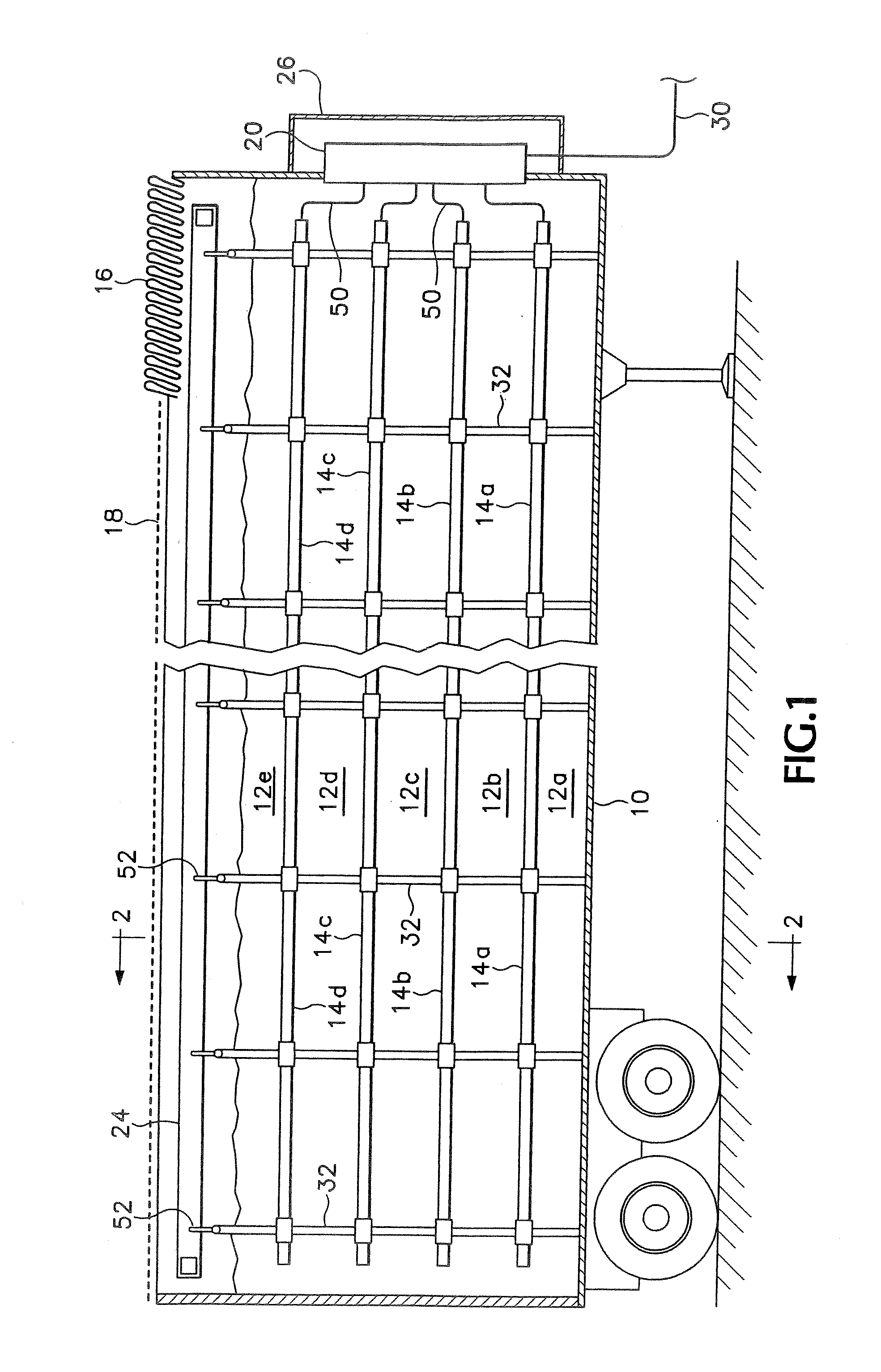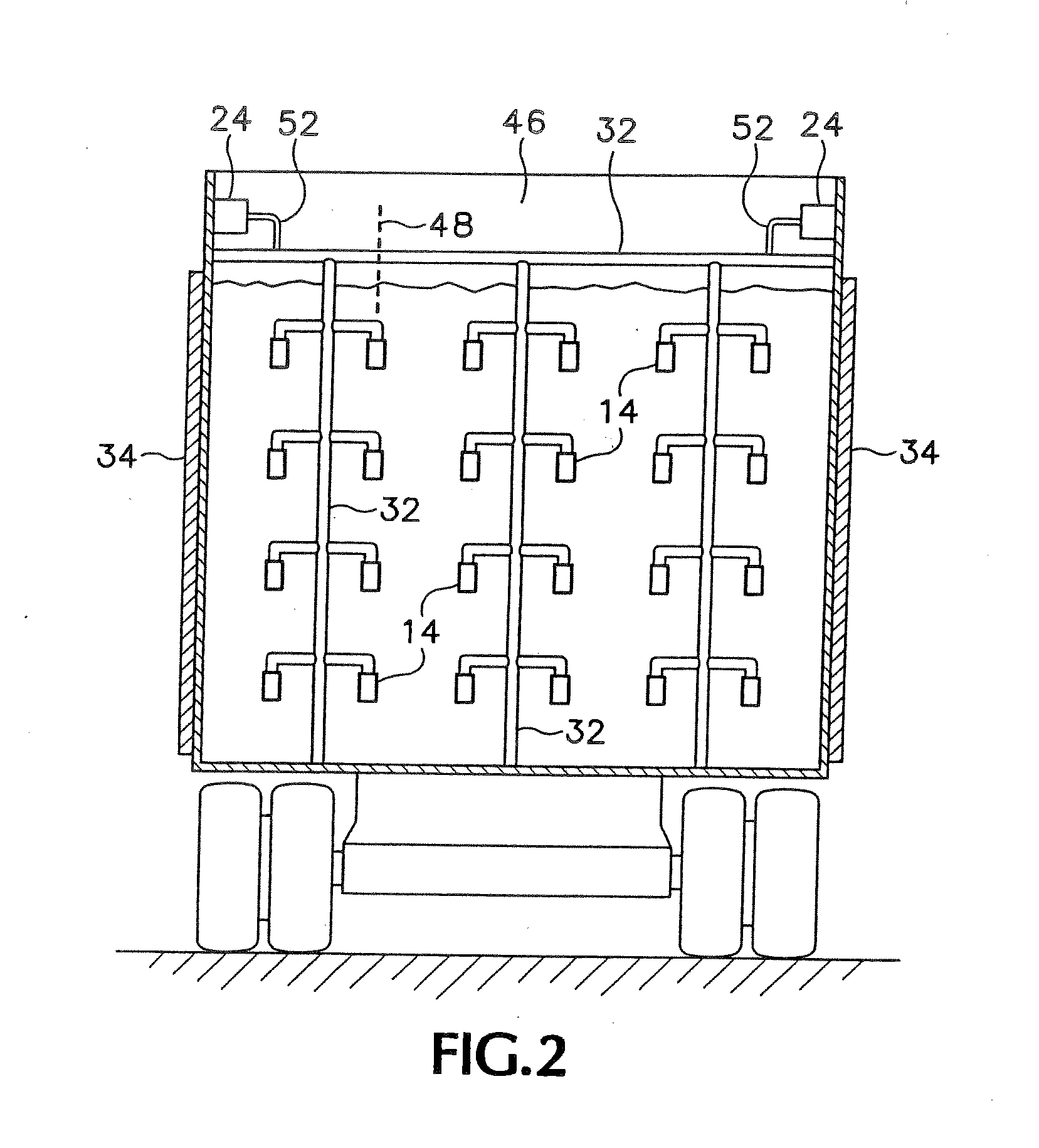Methods and systems for remediating contaminated soil
- Summary
- Abstract
- Description
- Claims
- Application Information
AI Technical Summary
Benefits of technology
Problems solved by technology
Method used
Image
Examples
Embodiment Construction
[0037]Referring to FIGS. 1-4, systems 1 and 1a are provided for remediation of contaminated soil which is removed from or stored at a contaminated soil remediation site.
[0038]Referring to FIGS. 1 and 2, the system 1 of the present invention can comprise a multi-layer contaminated soil remediation cell formed of a plurality of adjacent layers of contaminated soil 12a-12e, having a plurality of multi-functional conduits 14a-14d located between the adjacent layers of contaminated soil, all housed within a structural enclosure 10, which in this case comprises a transportable trailer. The multi-functional conduits 14a-14d are supported by conduit supports 32. The conduit supports 32 also function as a vapor path from the multi-functional conduits 14a-14d to the exhaust manifold 24.
[0039]In order to prepare for use of one of these remediation cells, a 20 ft×40 ft work area is cleared and leveled. This work area can comprise concrete, soil, asphalt or any other surface that can support the...
PUM
 Login to View More
Login to View More Abstract
Description
Claims
Application Information
 Login to View More
Login to View More - R&D Engineer
- R&D Manager
- IP Professional
- Industry Leading Data Capabilities
- Powerful AI technology
- Patent DNA Extraction
Browse by: Latest US Patents, China's latest patents, Technical Efficacy Thesaurus, Application Domain, Technology Topic, Popular Technical Reports.
© 2024 PatSnap. All rights reserved.Legal|Privacy policy|Modern Slavery Act Transparency Statement|Sitemap|About US| Contact US: help@patsnap.com










